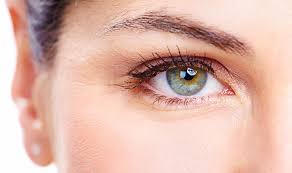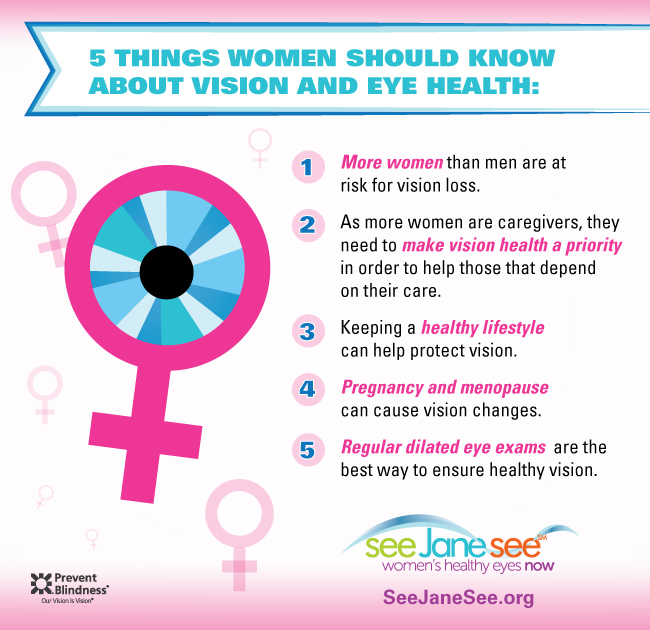Women’s Eye Health and Safety Month is observed in April and designed to educate women about the steps they can take to help stop vision loss. This is in response to increasing evidence that women are affected by blindness and visual impairment to a much greater degree than their male counterparts. It is important that women stay educated about taking the proper steps today, to help preserve their vision in the future.

Data from the Prevent Blindness study, “The Future of Vision: Forecasting the Prevalence and Costs of Vision Problems,” found that women make up the majority of the 4.4 million Americans age 40 and older who are visually impaired or blind. More women than men have age-related macular degeneration, cataracts, and glaucoma. These numbers will only continue to increase in the years to come. Women are also at higher risk of developing sight-threatening autoimmune diseases such as multiple sclerosis, lupus, and rheumatoid arthritis. Although some of these diseases have no known cure, many of the effects may be lessened through early detection and treatment. A Prevent Blindness survey found that:
- Less than 10% of American women realize that women are at a greater risk of suffering permanent vision loss than men
- 86% believe that men and women are at equal risk
- 5% believe that men are at greater risk
What should women know?
- More women than men are at risk for vision loss from eye diseases such as cataracts, glaucoma and macular degeneration. According to the National Eye Institute, more than 3 million women and more than 1.5 million men have dry eye. Dry eye is more common after menopause and women who experience menopause prematurely are more likely to have eye surface damage from dry eye.
- Keeping a healthy lifestyle helps keep the eyes healthy, including exercising regularly, not smoking and following a healthy diet. Additionally, make sure to always wear UV eye protection when outdoors.
- Pregnancy can cause vision changes including refractive changes, dry eyes, and puffy eyelids. Expectant mothers may also experience vision effects from migraine headaches, diabetes and high blood pressure.

What can women do to prevent vision loss?
A comprehensive eye exam should include a thorough examination of the retina, including an optomap, which is complementary to a DFE and an excellent tool for screening and for patient education. Because an optomap image can be obtained in less than ½ second, it leaves ample time for the practitioner to educate on eye health.
Other tips include removing contact lenses prior to taking a shower, going swimming or any activity that involves your eyes contacting water. Dispose of contact lenses and buy a new pair if water comes in contact with the eyes while wearing them. This will help prevent acanthamoeba keratitis resulting from exposure of contacts and eyes to water that is contaminated with the amoeba Acanthamoeba. Washing hands prior to putting on eye makeup is critical to proper eye hygiene. Keep all applicators clean and in good condition. If possible, do not reuse old applicators and opt for disposable types instead. Most importantly, do not ever sleep with eye makeup on. It’s also important to protect your eyes when doing those DIY home projects. Women are as prone to eye injuries from DIY projects as men. Protect your eyes with safety goggles. One little slip-up could scratch your cornea or lacerate the entire surface of your eye, causing permanent damage. You may need surgery, could lose your vision, or, worst case, lose your eye entirely. If your kids are helping out, they should wear protective eyewear too. Women experiencing blurry vision, eye pain or loss of vision, are urged to make an eye appointment as soon as possible.
“Above all else, the most important message we want to send is that first step for everyone, no matter what age, is to get a comprehensive eye exam by an eye care professional,” said Hugh R. Parry, president and CEO of Prevent Blindness. “By taking care of vision today, we can all help to keep vision healthy in the future.”
https://www.goodeyes.com/blog/womens-eye-health-safety-month-2016/
https://www.iabhp.com/national-wellness-observance-calendar/womens-eye-health-and-safety-month/